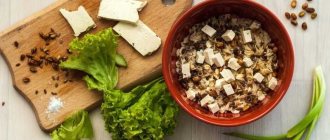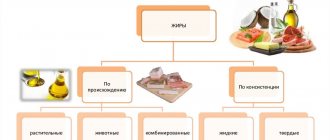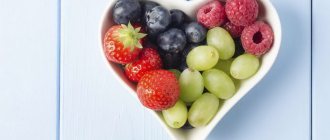Carbohydrate content in bread
Bread is a product that contains a large amount of carbohydrates. They are divided into two main groups. Among them are simple and complex. The largest amount of simple carbohydrates is found in products made from wheat flour.
It is not recommended to use them during weight loss due to the glycemic index, which contributes to a rapid increase in blood sugar levels. When it enters the body in excess, carbohydrates are converted into adipose tissue.
The body receives complex carbohydrates from rye or whole grain bread. To convert them into energy, the body requires more time due to the launch of complex biochemical processes. As a result, there is a slow increase in glucose in the blood and the body spends this energy only on the work of the brain, muscles and internal organs.
What foods contain simple carbohydrates? Table
A high content of quickly digestible carbohydrates is observed in the following products:
- natural honey, syrups, fresh jam;
- confectionery and flour products;
- rice or wheat flour;
- pasta;
- sweet and carbonated drinks;
- sweet fruits, berries and dried fruits.
Foods with fast carbohydrates are harmful to the body, a table of which is compiled in descending order. Therefore, you should exclude them from your diet or limit your consumption.
| Products | How many carbohydrates are contained in 100 g of product, g |
| Sugar | 99 |
| Caramel candies | 88,5 |
| Corn flakes | 83 |
| Natural honey | 82 |
| Waffles with fruit jam | 81 |
| Semolina | 74 |
| Marmalade sweets | 72 |
| Homemade jam | 70 |
| Date fruits | 69 |
| Sprouted rye seeds, cookies | 67 |
| Dried grapes | 65 |
| Popcorn | 63 |
| Milk chocolate | 60 |
| Instant noodles | 57 |
| Bakery | 55 |
| Cakes, candies with chocolate | 54 |
| Chips | 53 |
| Cookie | 50 |
| White bread | 49 |
| Cakes and pastries | 46 |
| Carbonated sweet drinks | 42 |
| Dried plums | 40 |
| Donuts, apple pie | 39 |
| Eclairs | 36 |
| Alcohol | 20-35 |
| Ice cream | 25 |
| Boiled white rice, pizza | 24 |
| Fried potatoes, canned corn | 23 |
| Sandwiches with sausages | 19 |
| Boiled potatoes | 17 |
| Bunch of grapes | 15 |
| Boiled beets | 10 |
| Freshly squeezed juice from oranges, apricots | 8 |
| Pumpkin | 7 |
| Melon, watermelon, boiled carrots | 5 |
To properly adjust your diet, it is recommended to consult a nutritionist. The specialist will explain which foods contain simple carbohydrates, and the table will allow you to correctly create a menu for the day.
What happens if you completely give up bread?
With a complete and rapid refusal of carbohydrates, the development of pathological reactions from the body is possible. Among them are:
- Incessant headache. A complete refusal of bread can lead to a lack of carbohydrates in the body, from which glucose is produced, which is a source of energy. The brain is one of the organs that primarily responds to a lack of nutrients.
- Constant fatigue due to insufficient energy supply.
- Tendency to depression. Low glucose levels cause insufficient serotonin production. In the initial stages, the patient may experience depressed mood and constant anxiety, which is replaced by unmotivated aggression and depression.
- Disorders of the digestive tract. Avoiding bread leads to insufficient fiber intake. As a result, intestinal motor function decreases and the likelihood of fermentation and dysbacteriosis increases.
- Constant feeling of hunger. Lack of glucose in the body leads to a constant feeling of hunger. To reduce the severity of this symptom, it is necessary to consume a sufficient amount of complex carbohydrates.
- Hormonal imbalance.
What carbohydrates are healthy?
Healthy carbohydrates have a complex chemical structure that is difficult to digest under the influence of active digestive enzymes and hydrochloric acid. As a result, nutrients are absorbed slowly, but by 90-100%. For a long time, while food passes through the gastrointestinal tract, the body spends the resulting carbohydrates as energy for the functioning of internal organs and systems.
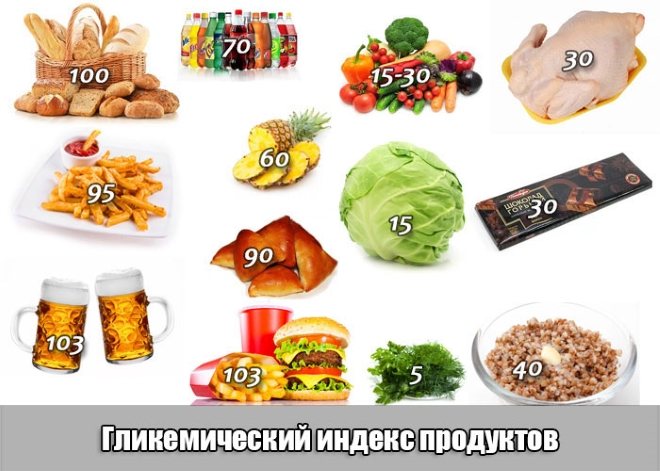
With the rapid absorption of simple carbohydrates, tissues cannot process the resulting saccharides, so excess nutrients begin to transform the liver into adipose tissue.
Cereals and legumes have a high content of complex carbohydrate chains. The body can obtain the maximum amount of vitamin and mineral compounds after digesting the germs and shells of grains. It is important to remember that under the influence of thermal and chemical treatment, 80% of the nutritional components are destroyed. Porridges should be steamed or cooked in water to reduce their calorie content.
High Carbohydrate Diet for Weight Loss
This weight loss technique is based on reducing the total calorie intake of the diet. To do this, you will need to exclude foods containing fast carbohydrates from the menu. They should be replaced with foods with complex carbohydrate chains. Therefore, your list of foods for weight loss should include foods rich in plant fiber. The dietary fiber found in fruits and vegetables causes a feeling of false satiety.
When it enters the stomach, fiber begins to swell, filling the free space. As a result, hunger is dulled, the daily amount of food consumed is reduced, as is the serving size. The chemical compound is practically not digested, so the body spends more energy on digestion than it receives from plant foods.
In addition to fresh vegetables and fruits, you should eat cereal porridges cooked in water. They have a similar effect, reducing appetite for 3-4 hours.
Diet to increase muscle mass
To gain lean muscle mass, you should follow a high-protein, low-carbohydrate diet. In order to obtain fructose and glucose, it is necessary to consume vegetables, fruits and leafy greens, with the exception of:
- bananas;
- grapes;
- potatoes;
- corn;
- various cereals
To prevent glucose from being converted into glycogen in the liver, you should drink up to 2 liters of liquid per day. It is allowed to consume freshly squeezed fruit, berry, and vegetable juices, herbal decoctions and still mineral water. Drinks will help remove excess fluid from the body and cause the breakdown of fat masses.
Calorie content and nutritional value of various types of bread
Different types of bread differ not only in composition, but also in nutritional value.
Read: How to take quail eggs: their benefits at any age
Table 1. Amount of BJU and Kcal in different types of bread.
| Product | Kcal | Squirrels | Fats | Carbohydrates |
| Wheat bread | 266 | 7,7 | 2,4 | 53,4 |
| Rye bread | 224 | 4,7 | 0,7 | 49,8 |
| Grain bread | 215 | 8,5 | 1,6 | 38,58 |
| Armenian lavash | 258 | 9,2 | 1,1 | 58,2 |
We invite you to watch a video with tips on what kind of bread you should eat to avoid gaining weight:
https://www.youtube.com/watch?v=SEV7RrLZiuo
List of foods with fast and slow carbohydrates
You need to create a diet menu based on a list of foods containing fast and slow carbohydrates. It is important to note that while some may fall into the same category, they may have different glycemic index and caloric content. Slow carbohydrate foods, even the most nutritious ones, do not contribute to weight gain. If the diet contains more complex ones, then the body does not lack glucose. Only what is needed is spent and nothing goes into reserve.
Fruits and vegetables
These are the foods that are best for snacking throughout the day. Green vegetables have a lot of fiber, and if the skin is this color, then they contain pectin.
Apples, pears, plums, cherries, peaches, apricots, green peas, pumpkin, tomatoes, cucumbers, avocados, kiwis and grapefruits are especially useful for losing weight and maintaining digestion, providing “glucose fuel”. You should be wary of grapes, potatoes and bananas, which are fast carbohydrates rather than slow ones. They contain a lot of sugar and starch. But in the first half of the day they are great for energizing.
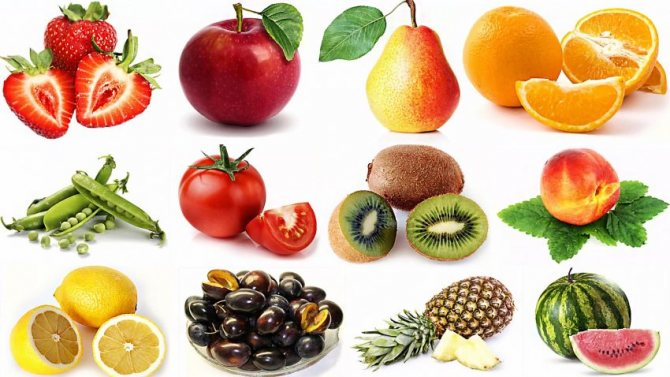
Cereals and cereals
Whole grains have the most benefits. Suitable for bread and baked goods are wholemeal flour, especially with bran, as well as cereal porridges. Pasta can contain fast or slow carbohydrates depending on what it is made from. If they are made from durum wheat, then they are complex. The same goes for rice, since it will contain fast or slow carbohydrates depending on the degree of processing. The higher it is, the more useless the product is.
Slow carbohydrates include buckwheat, pearl barley, peas, beans, and lentils. They need to be cooked with a minimum amount of salt.
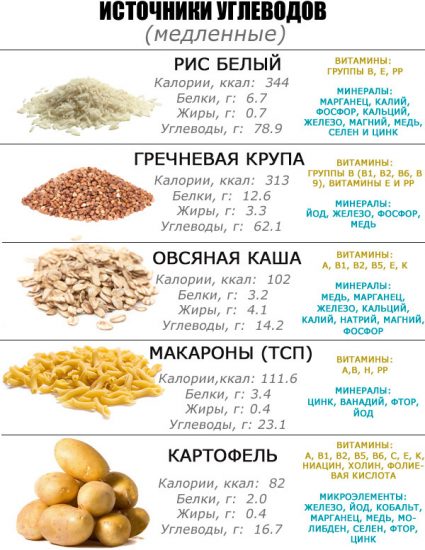
Oatmeal is also a slow carbohydrate, so it is very useful for breakfast. It helps you “hold out” until lunch and not start snacking on treats.
Juices
Drinks containing fruits and vegetables are also a good source of polysaccharides. But you need to prepare nectars, cocktails and juices yourself without adding sugar. Store-bought, packaged ones are of no use.
Dried fruits and nuts
They can also be sources of complex carbohydrates. Dried apples, pears, dried apricots, prunes, and figs are useful. But you can’t eat too many of them, since after the process of removing fluid, the amount of simple carbohydrates increases. You can also cook compote, preferably without sugar. Nuts can also be a source of polysaccharides. But you can’t overdo it with them; the norm per day is a handful.
We recommend reading about how to speed up your metabolism to lose weight. From the article you will learn about foods and medicinal herbs to speed up metabolism, increasing metabolism after 40. And here is more information about how to get rid of visceral fat.
A properly composed menu of fast and slow carbohydrates will help set your body up for weight loss. Polysaccharides provide a person with energy for a long time and improve digestion, eliminate waste and toxins. Fast ones provide a lot of energy at once when required in certain circumstances, but you should be careful with them.
Macro and microelements in bread
High-quality bread contains the necessary macro- and microelements, as well as vitamins, which ensure the full functioning of the body.
The greatest amount of useful substances is found in products with bran or made from whole grain flour.
The daily intake of bread contains the maximum amount of selenium. This microelement is necessary for the full functioning of various biochemical processes.
When whole grains are included in the diet daily, up to 30% of manganese is replenished, which acts as an antioxidant necessary for metabolic processes in mitochondria.
In addition, with sufficient intake, metabolic processes with carbohydrates, proteins and cholesterol are restored. Bread can provide up to 5% of the daily value of such substances as calcium, phosphorus, iron, magnesium, sodium, zinc and copper.
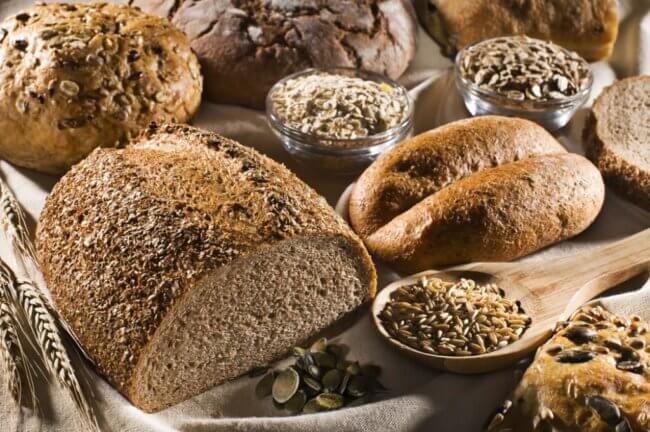
Table List of foods and their content of complex carbohydrates
In order for the body to work smoothly and have enough nutritional energy for the whole day, in order to avoid thoughtless consumption of fast sugars, it is worth knowing your personal standards for the consumption of carbohydrates in grams.
- sedentary work and lack of physical activity – 3 – 4 g;
- active lifestyle – 4 – 5 g;
- Professional sports and especially heavy loads require the use of up to 8 grams.
Complex carbohydrates are presented below in the form of a list of products and a table to make it easier to find information.
Fruits and berries
In addition to providing energy, such treats saturate the body with vitamins and minerals.
| Name | Number of carbohydrates in 100 grams of product |
| Lemon, sea buckthorn | 3 |
| Strawberry, cherry plum, grapefruit, strawberry | 6 |
| Currant | 7 |
| Mandarin, orange, apricot | 8 |
| Pears | 9 |
| Cherries, plums, sweet cherries, peaches, apples, plums | 10 |
| Pineapple, persimmon | 12 |
| Grape | 16 |
| Bananas | 21 |
Vegetables and greens
It is from plant foods that fiber and pectin come, so it is important to monitor the amount of vegetables in your diet. But it is also important that such food be both raw and cooked.
| Name | Number of carbohydrates in 100 grams of product |
| Radishes, asparagus, spinach, lettuce and iceberg | 3 |
| Beans, cabbage, tomatoes | 4 |
| Sweet peppers, cucumbers, eggplants | 5 |
| Dill, parsley, basil, oregano, oregano | 8 |
| Olives, onions and red onions, beets | 10 |
Porridge, dairy products
- Dairy products.
Despite the fact that milk and derivatives are fast carbohydrates, they should be included in the daily menu in order to consume calcium and vitamins.
| Name | Number of carbohydrates in 100 grams of product |
| Butter, soft homemade cheese | 2 |
| Kefir, yogurt without sweeteners or additives, sour cream | 4 |
| Whole milk | 5 |
| Low-fat cottage cheese | 5 |
| Semi-hard cheeses | 8 |
It is important to note that the dairy products listed in the tables are natural products without any artificial additives and not made from reconstituted milk. This group usually includes farm dairy products
- Cereals.
Unpolished and unheated cereals should be present in the diet every day, because they are a source of large amounts of substances necessary for good digestion.
| Name | Number of carbohydrates in 100 grams of product |
| Green buckwheat, millet, red rice | 68 |
| Barley, durum pasta | 71 |
| Corn | 75 |
Legumes and grains
| Name | Number of carbohydrates in 100 grams of product |
| Beans | 4 |
| Beans | 8 |
| Green peas, lentils | 20 |
Beverages
Most fruit juices contain many essential polysaccharides.
| Name | Number of carbohydrates in 100 grams of product |
| Apple juice | 25 |
| Beet juice | 30 |
| Banana smoothie | 90 |
Vitamins in bread
In addition to beneficial microelements and fiber necessary for the normal functioning of the digestive tract, the composition contains a large amount of vitamins.
Their maximum quantity is presented in products made from rye flour and in wheat products that have undergone careful processing.
The most common vitamins include:
- B1 or thiamine. It is involved in strengthening the nervous system, which reduces the body's susceptibility to stress, as well as high mental and emotional stress. Against the background of its regular intake into the body in sufficient quantities, muscles are strengthened, including in the heart.
- B2 or riboflavin. This vitamin is involved in the full functioning of the endocrine and nervous systems, as well as erythropoiesis. With insufficient intake of riboflavin, the development of insomnia and nervous tension is noted.
- B3 or nicotinic acid. The maximum amount of nicotinic acid is contained in products made from rye flour. Against the background of its regular intake into the body, not only a sufficient amount of energy is produced, but also the condition of the skin improves. Patients have a reduced risk of developing diabetes.
- B5 or pantothenic acid. In addition to participating in all biochemical processes, pantothenic acid is involved in strengthening the immune system and improving heart function.
- Vitamin E. Thanks to its sufficient intake into the body, the condition of hair and nails, as well as the skin, improves.
The harm of simple carbohydrates
Consumption of simple sugars can have quite a detrimental effect on people's health. An average person needs only 62 grams of glucose for normal work and functioning. (approximately 250 kcal).
Constant consumption of refined sugar leads to the fact that sugar levels remain elevated, and the pancreas does not have time to cope with its work. Insulin is released, but it is not used in any way (leading to insulin resistance and, later, type II diabetes).
A persistent state of insulin resistance negatively impacts brain function. If this lasts for a long time, it leads to inflammation of the brain, and subsequently to memory loss.
High sugar levels, as a result of consumption of simple carbohydrates, often become a consequence of dementia in older people. The higher the sugar level, the higher the risk of developing such a disease. A small reading of 6.6/mol per liter should make you think and reduce your intake of simple carbohydrates. The indicators for the body are quite normal, but for the brain they are already destructive.
Unlimited intake of foods with large amounts of carbohydrates often leads to obesity. While the amount of simple carbohydrates consumed increases, the oxidation of adipose tissue is significantly reduced, then the fat that is not consumed is stored.
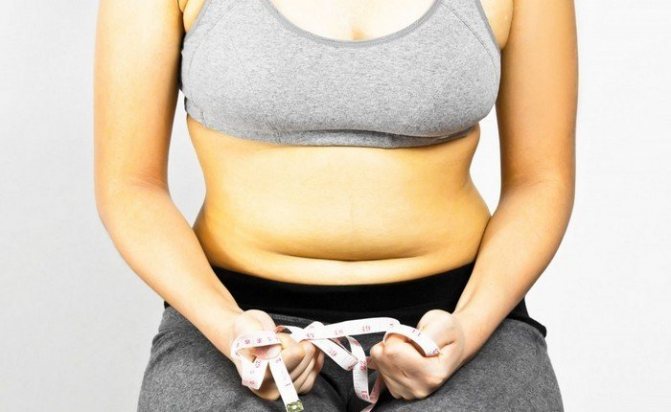
How to reduce your intake of simple carbohydrates:
- Before you make the decision to almost eliminate carbohydrates from your life, you should consult with a physician or nutritionist about the possible consequences. If you have serious illnesses, a diet without carbohydrates may be harmful.
- Adhering to the strategy of reducing simple carbohydrates in the diet, after consultation with doctors and nutritionists, it is necessary to make this way of eating a lifelong habit. If you adhere to restrictions for some time, poor health (health problems) may return.
- One of the most effective ways is to control the glycemic index of foods. If, after consuming a product, sugar quickly enters the bloodstream, then such a product has a high glycemic index, and a product that does not raise blood sugar levels so quickly and slightly is assigned a low index.
- First of all, stop consuming foods with simple carbohydrates. Avoid carbonated drinks, juices, as well as cakes and pastries.
- Switch to foods containing complex carbohydrates (which are rich in fiber).
- The second useful indicator to know is the glycemic load. This parameter indicates how quickly sugar enters the circulatory system, as well as how much fiber the product contains, which helps reduce high sugar levels.
- Change your diet in favor of more fish and meat consumption. Some types of low-carb diets emphasize red meat (high in protein but low in carbohydrates). Fish and poultry are excellent substitutes for carbohydrates.
- Try to limit portions. It is recommended to eat as much food as can fit in a glass. Eat at intervals of 5-6 times.
- Bake foods rather than fry them often. Flour batter contains unnecessary carbohydrates. To improve the taste, use herbs and spices that will give the dish a great taste.
Is it possible to eat bread when you are losing weight?
Most people who decide to lose weight first eliminate or minimize the amount of bread from their diet. Complete cessation of its use leads to a negative effect on the body.
Read: Calcium content in food: eating for health benefits
This diet product is capable of:
- Positively influence digestive function due to fiber. As a result, waste and toxins are removed.
- Stimulate the breakdown of fats, since the process of their destruction is triggered by carbohydrates. In addition, in addition to simple carbohydrates, the composition also contains complex carbohydrates. They provide a feeling of fullness for a long time.
- Replenish the amount of vegetable protein, which acts as a building material for cells, as well as vitamins and minerals.
- Produce endorphins and serotonin due to the taste of the product. It is necessary to take into account that different types of bread have different glycemic index - an indicator indicating the duration of absorption of the product. When dieting, it is important to select varieties with a low glycemic index, which are absorbed from the digestive tract for a long time and do not provoke appetite. These include Borodinsky or whole grain bread, while white bread must be completely abandoned.
In addition, to lose weight, you must follow several basic rules when consuming baked goods while losing weight. Among them are:
- Elimination of other carbohydrates when including bread in the diet. To reduce body weight, it is recommended to combine it with protein foods.
- Limit a single dose to 100 grams, in order not to exceed the permissible number of calories.
- Avoid product in the evening.
- Creation of fasting days with its complete exception.
What role do carbohydrates play in the body?
Carbohydrate foods are necessary to compensate for the body's internal energy costs. Organic compounds, if necessary, provide a set of muscle and fat mass. Carbohydrates that enter the body along with the food consumed have the following properties:
- Participate in the formation of various soft tissue structures. Polysaccharide chains are necessary to create and strengthen the outer cell membrane. Carbohydrates supply energy to cell nuclei, ensuring normal chromosome division. Organic compounds are necessary for the creation of nucleic acids, the production of active enzymes and neurotransmitters.
- They supply energy resources to the body. After food enters the stomach, nutrients are split off from the general chemical structure and descend into the intestinal tract. Microvilli absorb carbohydrates into the blood. Organic substances enter the intracellular space through the vascular bed, where they undergo oxidative reactions. As a result, 1 g of carbohydrates produces 17 kJ of energy. The oxidation process uses up the glycogen supply or glucose circulating in the blood.
- They are natural anticoagulants. These compounds thin the blood, reducing the likelihood of blood clots.
- Internal reserves of adipose tissue are formed from carbohydrates. To prevent glucose from being eliminated, the liver converts sugar into glycogen. Fat mass is synthesized in skeletal muscles, liver, subcutaneous tissue and in the space between internal organs.
- They have a positive effect on the digestive process. The energy received from carbohydrates stimulates the production of active enzymes for digesting food, which improves the breakdown and subsequent absorption of nutrients. Plant fiber normalizes the peristalsis of the smooth muscles of the gastrointestinal tract.
- Saccharides are part of the mucous secretion lining the inner surface of hollow organs. The liquid prevents the development of infectious and viral diseases, provides protection against damage from the effects of hydrochloric acid.
- Organic components strengthen the immune system and reduce the risk of developing malignant tumors.
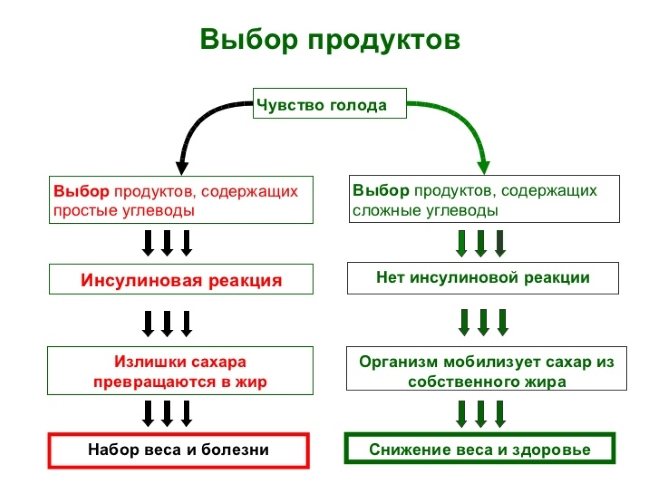
It is not recommended to eat harmful carbohydrates, which stimulate excess fat synthesis and fluid retention in tissues.
Benefits of carbohydrates
Carbohydrate foods help replenish the body's energy costs. At the same time, for normal functioning of organs, you should eat food containing complex saccharides. This form of organic compounds is absorbed slowly, without affecting the serum level of glucose in the blood. Complex carbohydrates are contained in plant fiber, which provides satiety for 3-4 hours and helps normalize gastrointestinal motility. Due to prolonged digestion, dietary fiber removes undigested food and toxic compounds from the body.
Low-carbohydrate plant foods speed up metabolic processes in the body and cause the breakdown of fat deposits in the subcutaneous tissue.
Carbohydrates take part in the formation of nucleic acids necessary for the construction of DNA structure and the transfer of genetic information. Saccharides help normalize protein and fat metabolism.
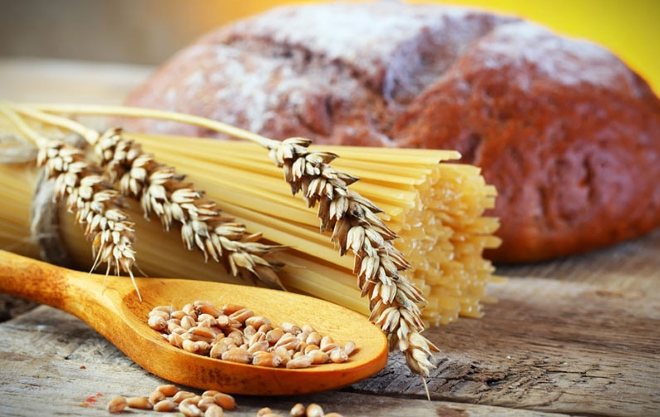
Daily carbohydrate needs
People are interested in how many carbohydrates an adult can consume per day. The daily recommended intake depends on age, gender, body weight and individual characteristics of the body. To calculate the daily dosage, use the following formula:
- Calculate your weight norm: subtract 100 cm from your height.
- The resulting number must be multiplied by 3.5.
Glycemic index
The glycemic index of foods helps determine how quickly the carbohydrates they contain increase plasma concentrations of glucose in the blood. Flour and confectionery products are leaders in the ranking of harmful products.
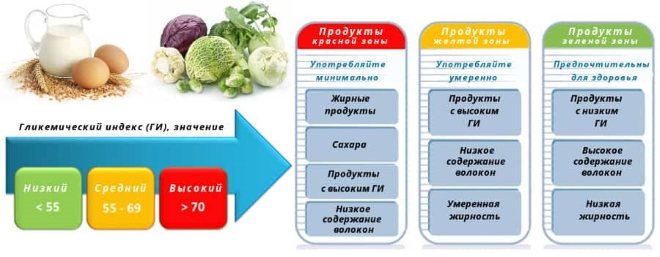
At the same time, foods with low carbohydrate levels - vegetables and fruits - have virtually no effect on blood sugar levels. Therefore, when consuming plant foods, the risk of developing cardiovascular pathologies, obesity, diabetes and malignant neoplasms remains low. Eating foods with a low glycemic index reduces the level of bad cholesterol in the blood plasma, which prevents the development of atherosclerotic plaques on the walls of blood vessels. The following carbohydrate table allows you to determine your GI level.
| GI level | Product | GI |
| High | White bread | 100 |
| 95 | |
| 90 | |
| 85 | |
| 75 | |
| 70 | |
| Average |
| 65 |
| 60 | |
| 55 | |
| Short |
| 50 |
| 45 | |
| 35-40 | |
| 30 | |
| 10-25 |
Bread for children, which is better, in what quantities
The preparation of a daily diet for children must comply with standards that will ensure full physical and neuropsychic development. The supply of sufficient energy, various vitamins and microelements prevents developmental delays and the formation of vitamin deficiency.
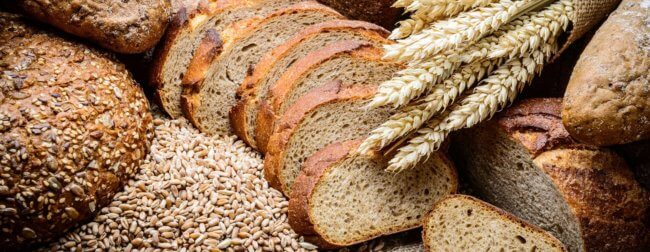
Bread is one of the products that should be present in the diet every day. They are included in the child’s menu from one year old. It is recommended to start complementary feeding with white bread, as it is easily absorbed and digested.
By the age of one and a half years, rye bread is also added to the menu. It is one of the healthier products compared to wheat, as it contains a sufficient amount of B vitamins, dietary fiber, and plant proteins.
The daily norm for children under one and a half years old should not exceed 20 grams of rye bread and 40 grams of wheat. From one and a half to three years, 30 and 60 grams. If baked goods, such as cookies or rolls, are added to the child’s menu, the amount of wheat bread is reduced.
Table of ready meals containing starch
In ready-made dishes, the starch content is very different from the original products:
| Cooked dish | Starch in 100 g |
| Potato chips | 54 g |
| Bakery products | 40-60 g |
| Homemade noodles | 58 g |
| French fries | 35.2 g |
| Boiled rice | 27.7 g |
| Boiled pasta | 26.5 g |
| Boiled spelled | 19.6 g |
| Boiled corn | 18.2 g |
| Boiled potatoes | 14-18 g |
| Boiled beans | 15.4 g |
| Boiled potatoes | 14.1 g |
| Oatmeal on the water | 11.6 g |
| Mashed potatoes with milk | 11 g |
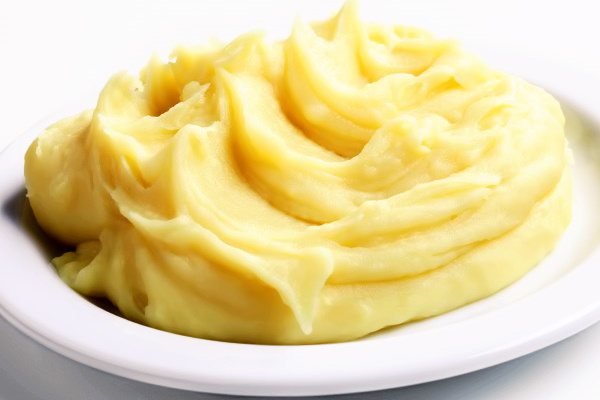
It is important to learn how to correctly combine dishes and foods high in starch in order to extract its beneficial forms. To do this, you need to eat protein foods separately from starchy carbohydrates, combining them with fresh tomatoes and vegetables, eating them with plenty of fresh herbs and lettuce.
If possible, include more raw vegetables in your diet that have not been subjected to long-term heat treatment. Reduce cooking time from starchy foods and steam them.
It is necessary to obtain a sufficient amount of B vitamins, which are involved in the breakdown and absorption of starches and complex sugars. You should eat a moderate amount of fat, seasoning prepared vegetables and cereals with cream, sour cream or high-quality butter.
Bread for the elderly
For elderly people, it is necessary to carefully consider the preparation of the daily menu. In many ways, nutritional habits change due to age against the background of acquired diseases and changes in the functional activity of the digestive tract.
Read: How to eat carrots to get maximum benefits
First of all, it is necessary to take into account the presence of acquired pathologies. Among them, the most common are type 2 diabetes mellitus, colitis and gastroduodenitis of various origins.
Diabetes requires daily menu control, and white bread and various baked goods have a high calorie content due to simple carbohydrates.
Changes in the functional activity of the digestive tract are associated with a decrease in motor function. In addition, as patients age, they lead a sedentary lifestyle, which increases the risk of developing constipation.
To prevent abdominal pain and accumulation of feces in the intestines, preference should be given to products with coarse fiber. This can be whole grain rye bread in small quantities.

Beneficial features
Natural starches, supplied in moderation through the consumption of cereals, root vegetables and vegetables, have a positive effect on a person’s well-being and health, his figure and appearance.
Starch, especially the resistant type, has a lot of beneficial properties, so regular consumption of moderate amounts of starch-containing foods leads to positive changes in the human body:
- Fermented starchy substances serve as a prebiotic for the beneficial inhabitants of the intestinal microflora, which has a positive effect on the entire digestion process, and also increases the immunity and protective functions of the body, its resistance to various infections and autoimmune diseases.
- When starches are broken down, fatty acids and a very useful substance, butyrate, are released, which stimulates metabolism and metabolism at the cellular level, reducing the number of pathogenic microorganisms and intestinal acidity, and prevents inflammatory and malignant processes of cell degeneration.
- Short chains of fatty acid compounds formed during the breakdown of starch in the intestines enter the bloodstream and reduce sugar levels, increasing cell sensitivity to insulin, promoting better glucose processing, which has a beneficial effect in the treatment and prevention of type 2 diabetes.
- The fibers contained in starch help restore the tissues of the mucous membranes of the stomach and intestinal walls, eliminate and heal various defects and injuries, normalize motor activity and the absorption of nutrients.
- Slow and resistant starches in combination with fiber promote a long-term feeling of fullness, which leads to a decrease in food consumption and a decrease in body fat, which is an excellent prevention of the development of metabolic syndrome.

- Leads to a decrease in the level of cholesterol in the blood, normalization of its individual fractions, as well as strengthening and cleansing of the walls of blood vessels, which is an early prevention of atherosclerosis and hypertension.
Harm from bread
Despite the benefits that bread has when entering the body, there are also negative factors associated with its consumption. Its harm depends on the type of product that is introduced into the human diet.
When eating white bread, the following are distinguished:
- Increased blood viscosity.
- Disturbance of intestinal microflora. Excessive intake of products made from wheat flour enhances the fermentation process and slows down peristalsis, which provokes constipation, discomfort and pain in the abdominal area.
- Metabolic disorders, as well as an increased risk of obesity. White bread is considered a high-calorie product with a low content of vitamins and microelements. This is due to the high degree of processing of wheat grains and the loss of useful substances with waste particles.
When eating rye bread, the following are distinguished:
- Digestive disorders associated with the presence of coarse fibers.
- Irritant effect of the product on the gastric mucosa. If consumed regularly in large quantities, it can cause heartburn, stomach pain and belching due to increased acidity.
- Reduced absorption of nutrients due to coarse fiber contained in the composition.
- Digestive disorders due to gluten intolerance.
Types and composition of starch
Today, the popularity of a gluten-free diet is growing, so more and more attention is being paid to the use of starch in the preparation of breaded dishes and baked goods.
Starch is found in plant products in different forms:
- Hard-to-digest starches in the form of amylase are slowly broken down in the human body, gradually releasing energy.
- Amylopectins are quickly digested starches, easily destroyed in the stomach under the influence of hydrochloric acid, and instantly absorbed into the blood through the intestinal walls.
- The resistant type of starch is called resistant because it is not broken down in the stomach and passes into the intestines unchanged. Absorption occurs due to fermentation by bacteria of the large intestine and the release of fatty acids, which serve as nutrition and building material for cells and beneficial microflora. It improves the condition of all body systems and normalizes digestion.
Resistant starch is also divided into several types with different chemical properties:
- A naturally occurring type produced by most legumes and grain plants.
- A different type is found in unripe bananas and raw potatoes.
- During heat treatment and subsequent cooling, type 3 starch is formed.
- Artificial type or refined, created using the chemical industry. There may be different processing intensities, therefore it is divided into varieties and brands depending on humidity and degree of purification.
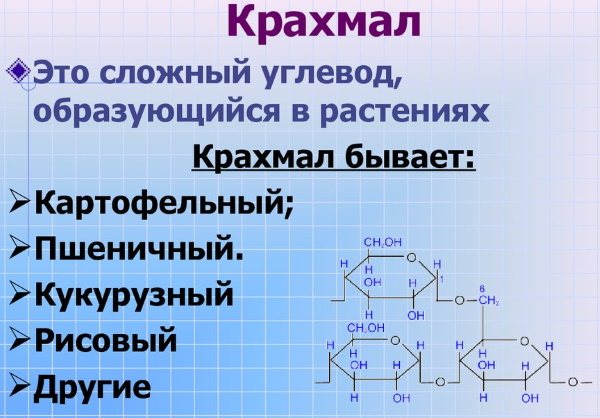
A specific pure type of starch is rarely found in food products; they are mainly found in various combinations and varieties, and the type and volume of this substance changes depending on the preparation of food. Of course, you should pay special attention to its more useful forms, giving preference to natural starch.
Starch is also divided according to the type of raw material used:
- Potato – 357 kcal.
- Corn – 329 kcal.
- Rice – 348 kcal.
- Wheat – 342 kcal.
Recommendations for bread consumption
Despite the benefits of this product, it is necessary to take into account its negative effects on the body. Therefore, following basic food intake recommendations is important for every person. Among them are:
- Use the daily amount of the product, without exceeding the amount.
- Preference is to include whole grain or rye flour products in the diet.
- Complete exclusion of baked goods if the body is intolerant to them.
We recommend a video about the benefits and harms of bread:
Adding bread to your menu every day will help avoid the development of vitamin deficiency and also improve the functioning of the digestive system. An excess of wheat flour products is not recommended for people at any age, therefore, despite the variety of products and their taste, it is important to limit their intake.
Read along with this article:
- Carbohydrates: which foods contain more of them, their importance for the body
- Foods containing large amounts of protein: benefits for the body
- Low-carbohydrate diet - a list of foods that allow you to quickly...
- What effect does coarse fiber have on the body, in what…
- The ABC of taste: calorie content of smoked capelin
- What cereals can you eat if you have diabetes: nutrition for...
- Phosphorus in food - table of standard values and...
- The ABCs of healthy eating: which foods are rich in magnesium
- Beneficial properties of glucose: what is dextrose for, and what...
What are carbohydrates
Carbohydrates in food are contained in the form of glucose, fructose, starch and dietary fiber. Chemicals belong to the main category of components necessary to nourish tissues and cells. Thanks to the energy received, the functional activity of internal organs increases. Glucose is necessary for the proper functioning of brain neurons, so when following a low-carb diet, the body's thought processes slow down.
You should consider which foods are classified as carbohydrates; a list of the following natural foods will help you correctly create a menu for the day:
- cereals;
- starchy vegetables: potatoes, corn;
- fruits and berries with a high fructose content: grapes, bananas, raspberries, strawberries, sweet apples, pears, pineapples, citrus fruits.
Food contains 3 types of nutrients: proteins, fats and carbohydrates. All forms of nutrients should be present in the diet. In this case, only natural foods should be included from the group of saccharides. High-carbohydrate confectionery and flour products impair the functioning of the liver and pancreas. Excessive amounts of glucose are stored in the body as glycogen in the subcutaneous tissue.
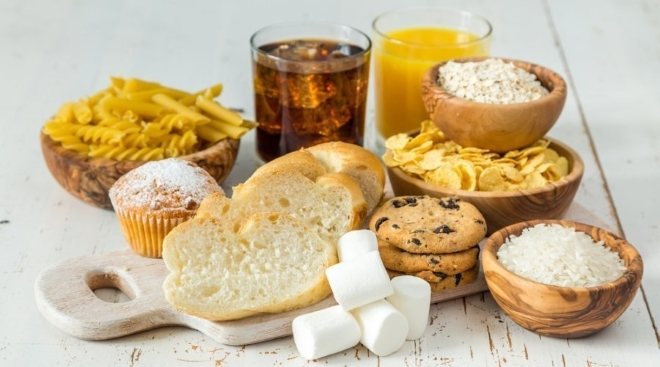
An adult needs about 135 g of carbohydrates per day. At the same time, each person has individual needs, so the amount of saccharides should be 45-60% of the total calorie intake. 1 g of carbohydrates corresponds to 4 kcal.
